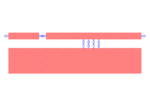pragash
Advanced Member level 2
it's often easy to design an LNA circuit by doing impedance matching using "Smith chart utility" tool in ADS. In the layout simulation, due to parasitic introduced by the layout, the layout simulation will not correlate to the circuit simulation. Is there any commonly used method of establishing a correlation between circuit and EM simulation for the LNA.
BR
pragash
BR
pragash
